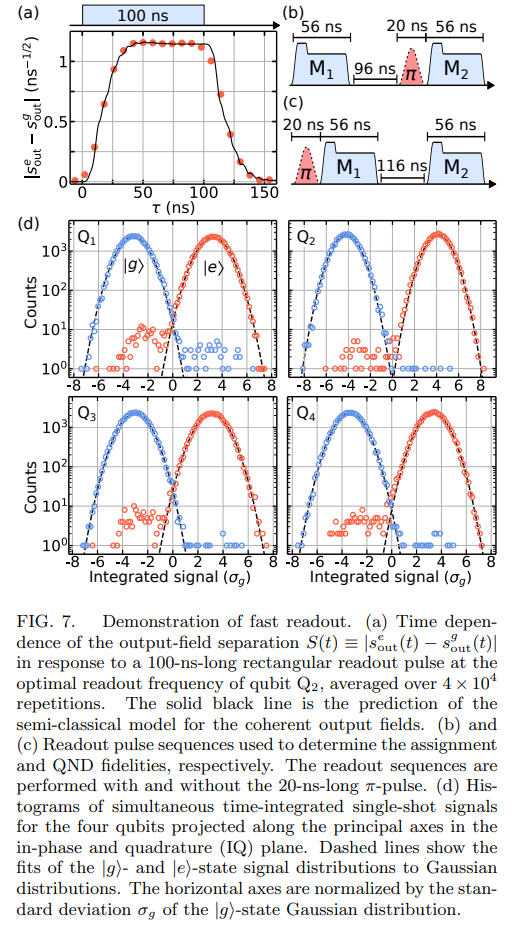Fast multiplexed superconducting qubit readout with intrinsic Purcell filtering
2024-09-10 13:55
3146 浏览Source: https://arxiv.org/pdf/2409.04967
Abstract: Fast and accurate qubit measurement remains a critical challenge on the path to fault-tolerant quantum computing. In superconducting quantum circuits, fast qubit measurement has been achieved using a dispersively coupled resonator with a large external linewidth. This necessitates the use of a Purcell filter that protects the qubit from relaxation through the readout channel. Here we show that a readout resonator and filter resonator, coupled to each other both capacitively and inductively, can produce a compact notch-filter circuit that effectively eliminates the Purcell decay channel through destructive interference. By utilizing linewidths as large as 42 MHz, we perform 56-ns simultaneous readout of four qubits and benchmark an average assignment fidelity of 99.77%, with the highest qubit assignment fidelity exceeding 99.9%. These results demonstrate a significant advancement in speed and fidelity for multiplexed superconducting qubit readout.


Conclusion: We have shown that by coupling a quarter-wavelength readout resonator and filter resonator together, both capacitively and inductively, it is possible to engineer an intrinsic notch filter that can provide strong auxiliary Purcell filtering to the qubit. An equivalent-circuit model has been introduced and used to find symbolic expressions for the notch filtering and for the coupling strength between the readout and filter resonators. We have experimentally verified these formulas in a device with fourto-one readout multiplexing. The notch filter broadens the range of linewidths for the readout mode that are possible without impacting the qubit relaxation time. By designing readout modes with external linewidths as large as 42 MHz, we tuned up a fast (56-ns) multiplexed readout across four qubits and benchmarked a state-of-the-art average simultaneous assignment fidelity of 99.77%, with the highest qubit assignment fidelity equal to 99.91%. The compact coupled resonators with intrinsic notch filtering offer strong Purcell protection and are straightforward to design, making this an attractive circuit component for superconducting qubit readout.
